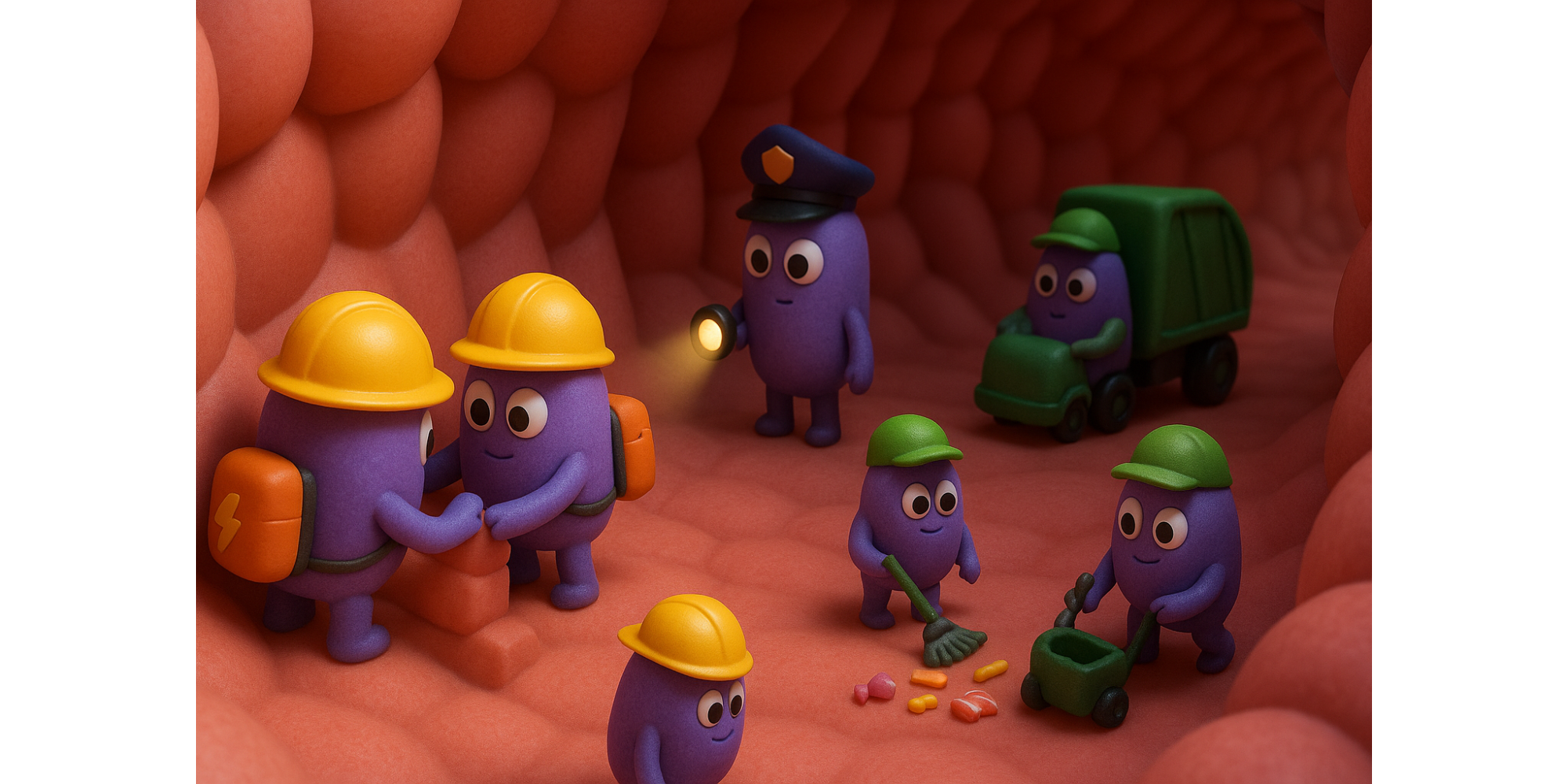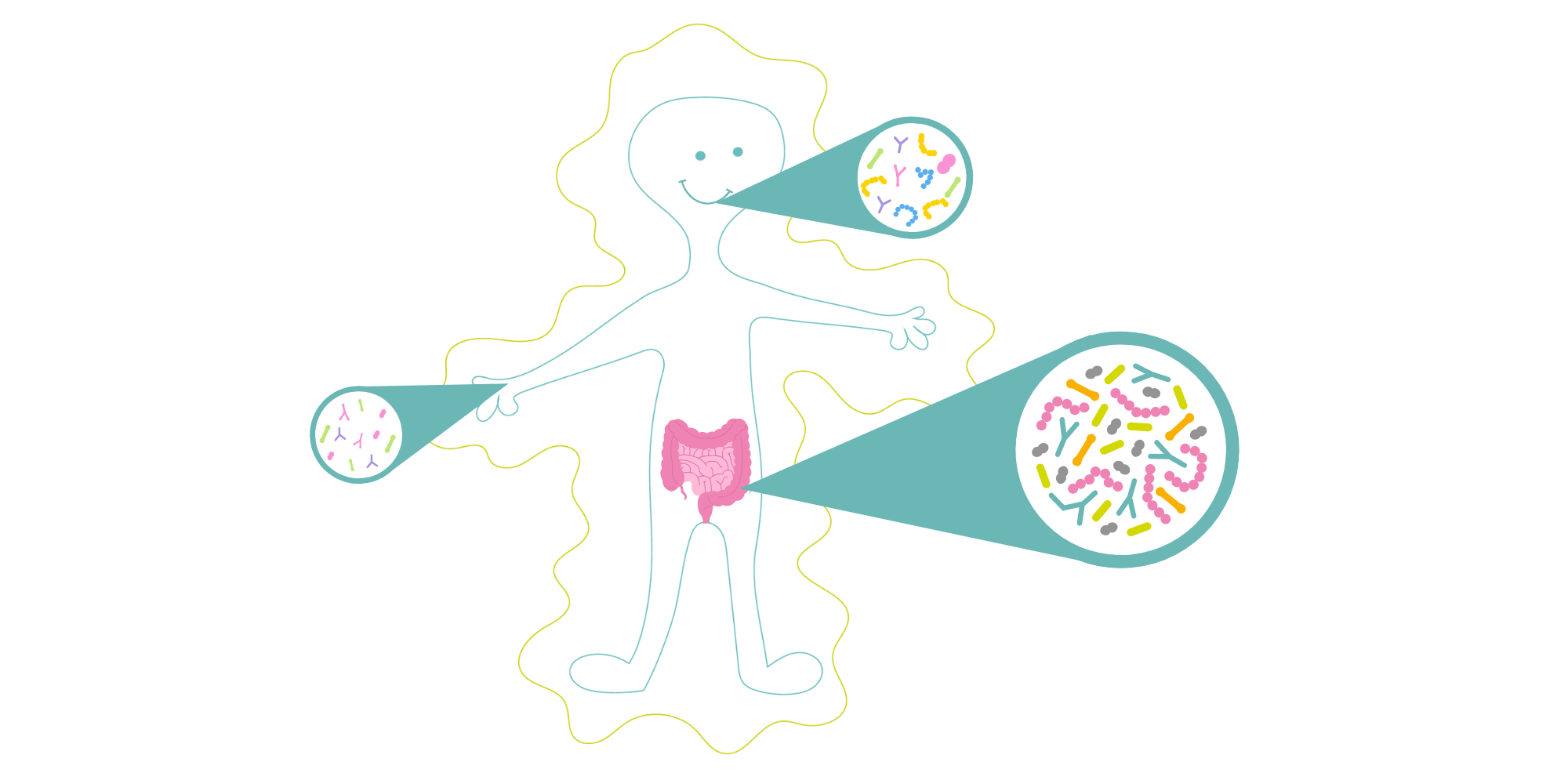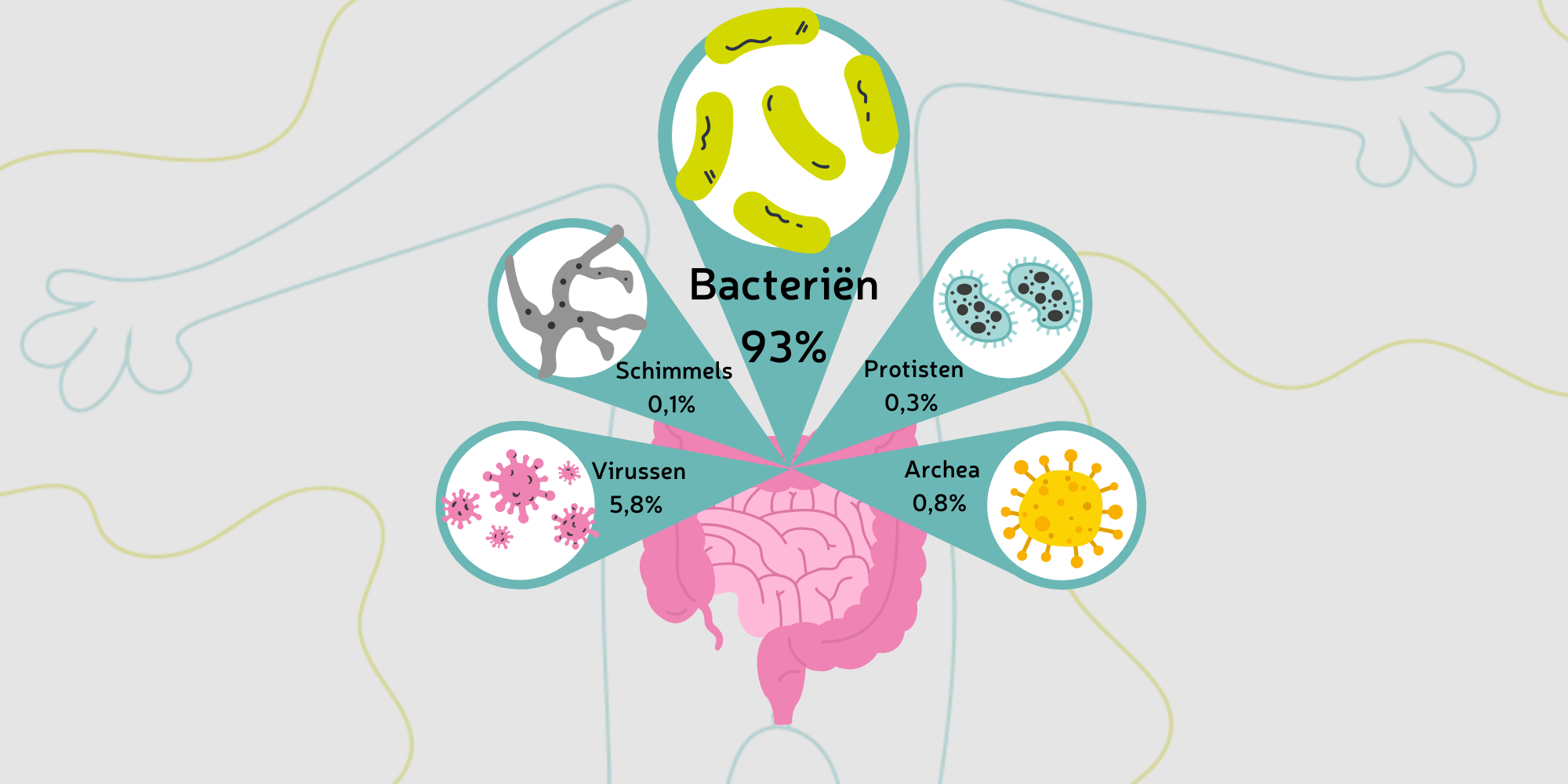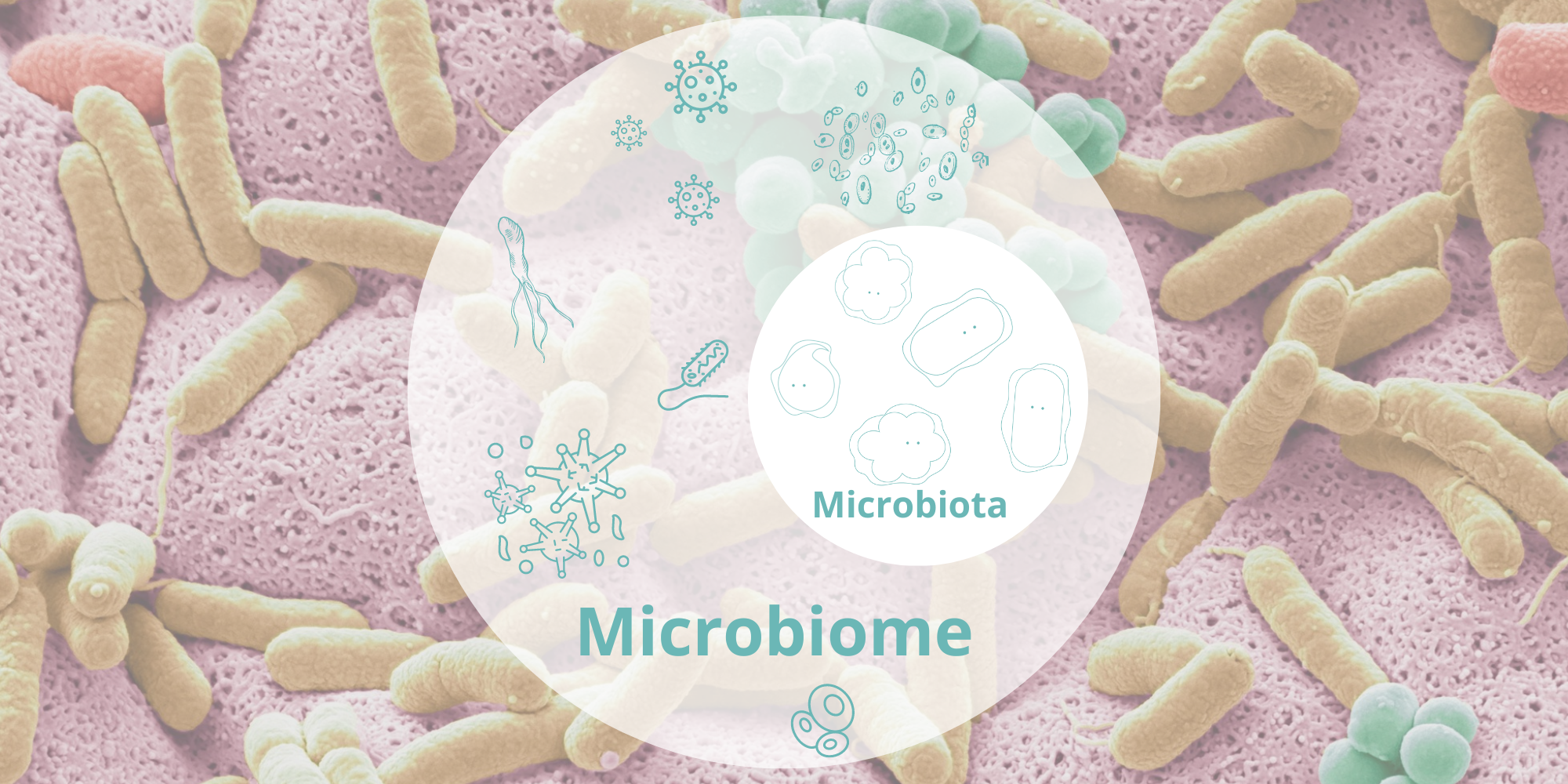The gut bacteria test that gives you insight into your health
- Microbiome test kit
- 16S analysis
- Scientific insights
Learn more
about the microbiota
Last updated: 10-09-2025
You hear it more and more often: “healthy guts are the foundation of your health” or “your gut is your second brain.” But what do people actually mean by that? And why are scientists constantly talking about the microbiome or microbiota? It may sound complicated, but it’s really about the millions of tiny residents living in your gut: bacteria.
In this blog, we explain what gut bacteria are, what the microbiome (or microbiota) actually is, how it forms from birth, and why this invisible world is more important than you might think.
A gigantic community lives in your intestines: trillions of bacteria, fungi, yeasts, and other microorganisms (also called microbes). You can’t see them with the naked eye (but you can with a microscope), yet together they weigh about one and a half kilos — about as much as your brain!
These gut residents work hard. They help digest your food, produce vitamins, train your immune system, and protect you from intruders. Think of them as a bustling city: some bacteria are the construction workers, others the sanitation crew, and still others the police keeping order. Without these ‘citizens,’ your body simply wouldn’t function properly.

The terms microbiome and microbiota are often used interchangeably, but they don’t mean exactly the same thing.
Microbiota: all the microorganisms (such as bacteria, yeasts, and other microbes) living in a specific place in or on your body. For example, the gut microbiota (all microbes in your intestines) or the skin microbiota (the microbes living on your skin).
Microbiome: this goes a step further. It refers not only to the collection of microbes themselves, but also their DNA, the substances they produce (such as enzymes and metabolites), and the ways they cooperate and communicate.
In short: the microbiota are the residents, and the microbiome is the entire habitat including everything those residents do and produce.
In everyday language, people often say gut flora, but that’s not actually correct. Plants don’t grow in your intestines — microbes do.

Your microbiome doesn’t form later in life; it starts developing at birth. During a vaginal delivery, a baby receives a substantial dose of the mother’s bacteria. With a C-section, that transfer is different: the starting point is often skin and environmental bacteria, which sets a different baseline for your microbiota.
In the first months, breastfeeding plays a big role. It contains special sugars that the baby can’t digest but are intended to feed certain beneficial bacteria – such as Bifidobacteria –. And let’s be honest: babies who put everything in their mouths, from toys to sand, may seem messy, but that actually helps make their microbiome more diverse.
Your genes (genetic material) also have a say: they partly determine which bacteria can more easily settle in your gut. Once solid foods are introduced, the microbiome shifts again and different species become more important. Around age three your microbiome is fairly stable, but it remains influenced throughout life by diet, stress, medication, and lifestyle.

More and more research shows that your microbiome does more than just assist with digestion. Here are some of the most important functions:
In short: your microbiome isn’t a side note, but a key player in your health.
Also read: How gut bacteria influence your health
Also read: Symptoms of a disrupted gut microbiome: how it affects gut health
Your microbiome is sensitive to how you live. Things that influence it include:
But… everyone’s microbiome is unique. And that’s important to know! What works well for one person might do nothing for another. One person may respond well to certain foods, while another experiences bloating or gas. That’s why there’s no universal ‘perfect diet’.
Read more: What does a healthy microbiome look like?
No two microbiomes are the same; it’s as unique as your fingerprint. That’s why scientists and doctors increasingly look at personal analyses.
A microbiome test shows which bacteria live in your gut, who plays the leading role, and who might be taking up too much space. With that knowledge, you better understand why your gut sometimes protests (rumbling, bloating), or why you’re symptom-free. It gives you a behind-the-scenes look at your own gut city and tools to better nourish and care for those residents.
So we won’t hand you a superficial list of only ‘good’ or ‘bad’ bacteria, but a complete overview of all bacteria living in your gut, including tailor-made tips & tricks on how to influence them. Only with this information can you truly say something meaningful about your gut health — and take targeted action with diet or lifestyle.
Gut bacteria aren’t an invisible side issue, but a complete community working around the clock for your health. Your microbiome helps with digestion, protects against intruders (pathogens), and even communicates with your brain.
What’s special is that your microbiome is shaped from birth, yet you can influence it throughout life via diet, stress, exercise, and lifestyle. Because every microbiome is unique, there’s no one-size-fits-all “how to keep my gut healthy” approach. That’s exactly why it’s interesting to discover how your personal microbiome works and which habits make the difference for you.
Shkoporov, A. N., & Hill, C. (2019). Bacteriophages of the human gut: the “known unknown” of the microbiome. Cell host & microbe, 25(2), 195-209. doi: https://doi.org/10.1016/j.chom.2019.01.017
Thursby, E., & Juge, N. (2017). Introduction to the human gut microbiota. The Biochemical journal, 474(11), 1823–1836. doi: https://doi.org/10.1042/BCJ20160510
KvK nummer: 65867637
This website uses essential cookies to ensure correct functionality. In order to improve our site we can also use optional cookies.
More information